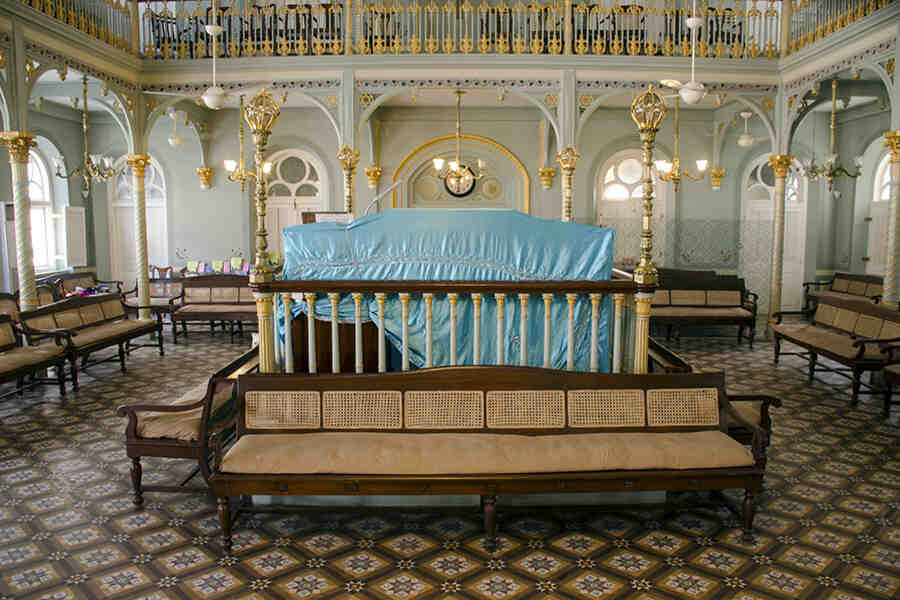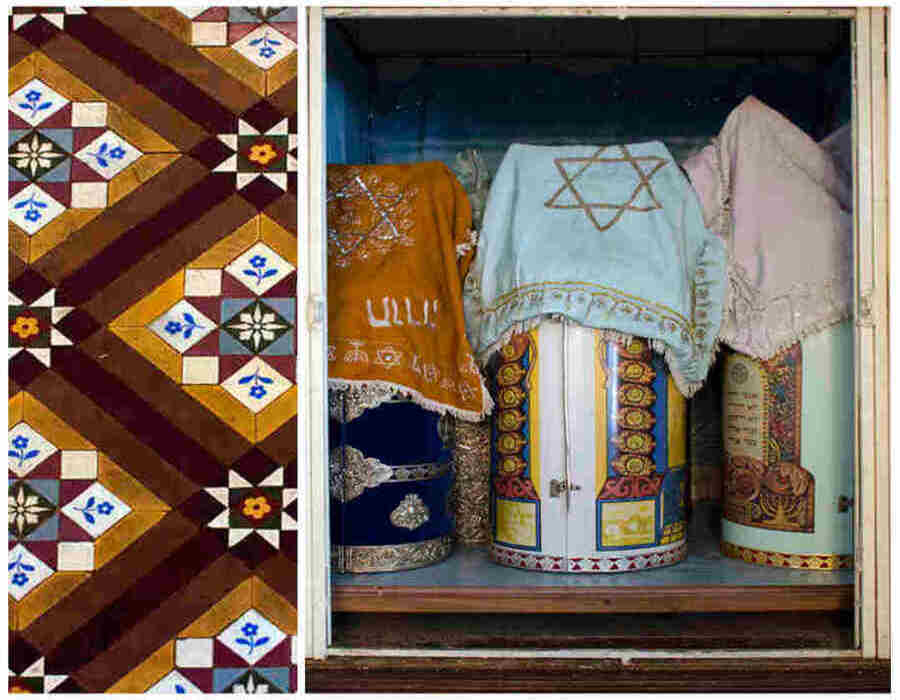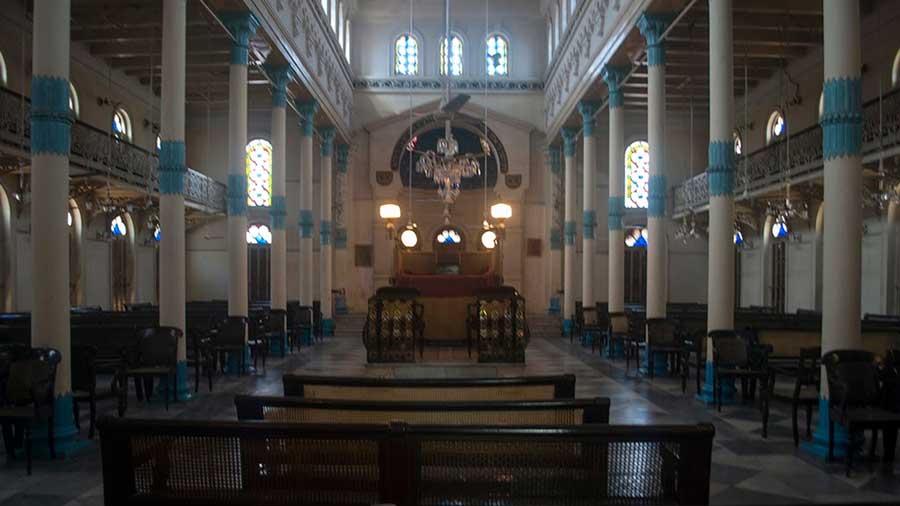Located behind the Kala Ghoda statue and at the heart of Mumbai’s cultural hub stands the iconic blue synagogue. Officially known as the Keneseth Eliyahoo Synagogue, it is one of the two Baghdadi synagogues (other being Beth El Synagogue in Byculla) of Mumbai. It is the grandest of the Mumbai synagogues but sadly it is no longer blue.
Today, it has a bright white exterior coupled with indigo borders. It was a result of a restoration in 2018-19. Although the synagogue has been blue for many decades but the restorers found that Mumbai’s iconic blue was not originally blue. After pain-staking research, they could figure out the original colours and it was restored back to its original glory.

The synagogue follows a mix of Neo-Classical and Gothic-Victorian architecture
Ever since the 26/11 Mumbai attack of 2008 all the synagogues in Mumbai have been heavily guarded and Keneseth Eliyahoo Synagogue is no exception. Guardrails surrounds the synagogue and heavily armed guards are posted at the entry gate. Although it is open to public, visitors need to carry their ID cards and pass through a security check to enter the synagogue.
Keneseth Eliyahoo Synagogue (literally meaning gathering of Elijah) was built in 1884 by Jacob Elias Sassoon and his brothers in memory of their father, Elias David Sassoon, who was the son of David Sassoon. David Sassoon was the first Bagdadi Jew settler of Mumbai (then Bombay). He arrived in 1832 and was a successful businessman and industrialist. He is considered as the father figure of the Mumbai’s Bagdadi Jews. He constructed the Beth El Synagogue, the first Bagdadi synagogue of Mumbai. The synagogue still stands in the Byculla area of Mumbai.

Decorative floor tiles inside the synagogue and (right) cases housingholy Jewish scrolls
Keneseth Eliyahoo Synagogue is designed by the British architectural firm Gostling & Morris, the synagogue follows a mix of Neo-Classical and Gothic-Victorian architecture. The exterior façade contains Corinthian columns and triangular pediments. The ground floor of the three-storeyed structure is used for administrative purposes. It includes office, classroom, event room, storage area and also a mikvah (ritual bath).
The double-height synagogue occupies the upper two floors of the three-storeyed building. The upper floor of the synagogue contains the ladies’ gallery, which wraps around the three sides. The interiors are laid in neo-Gothic style with slender pillars and decorative motifs. Antique furniture with decorative motifs are part of the grand interiors.
The western wall, facing the holy Jewish city of Jerusalem, houses the arc (heckal) comprising three wooden doors. The doors leading to small chambers housing tora scrolls kept in decorative silver and wooden caskets. The heckal (arc) is crowned with a grand stained glass window. It consists of only floral and geometric design and is the centre of attraction of the Keneseth Eliyahoo Synagogue. Sandwiched between the stained glass and the doors is a small marble plaque containing the 10 commandments written in Hebrew.
The floor is laid out with decorative tiles. The central wooden platform (bimah) is fitted with brass railings and ornamentation, including brass and glass dome lights projecting from the four corners. Several brass chandeliers lit up the interiors of the synagogue. The women’s gallery is located upstairs. Ornamental pillars with rounded metallic arches support the women’s gallery, which runs around the three sides of the upper floor.
Next time you are in Mumbai, do spare some time to visit the grandest synagogues of the city and get a glimpse of the Jewish life in the business capital of the country.
Quick info
· Visitors are usually allowed. However, the synagogue is sometimes closed. A prior appointment is advisable. Contact person: Solomon Sopher (solomon.ijc@gmail.com)
· Entry charge Rs 300. Entry & photography charge: Rs 500; Entry & videography charge Rs 1,000




